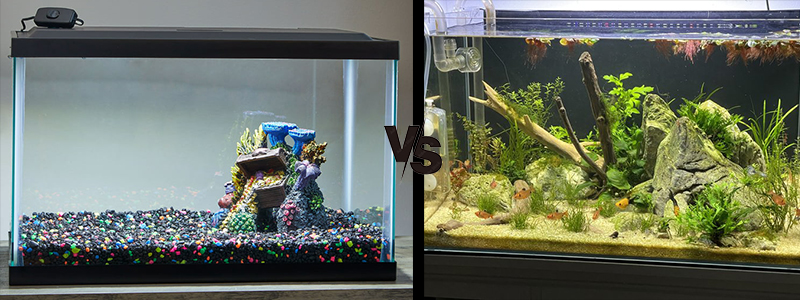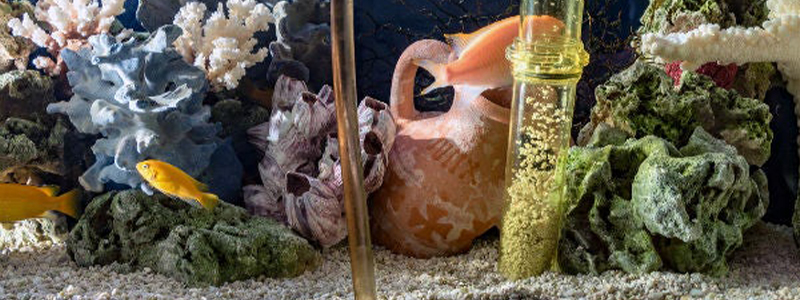Molly fish are a popular freshwater aquarium fish known for their peaceful nature, hardiness, and attractive appearance. They are part of the Poecilia genus and are native to Central and South America, but can now be found in many parts of the world due to their popularity in the aquarium trade.
Appearance and Characteristics
Molly fish come in a variety of colors, including black, white, silver, orange, and gold, and can have a variety of patterns, including spotted or striped. They have a rounded body shape and a triangular dorsal fin. Males typically have a larger dorsal fin and a pointed anal fin, while females have a rounder, fan-shaped anal fin.
Molly fish are livebearers, meaning they give birth to live young instead of laying eggs. They are also known for their high reproductive rate, with females giving birth to up to 100 fry in a single pregnancy. Mollies can hybridize easily with other Poecilia species, such as Guppies and swordtails, resulting in a wide range of color and pattern variations.
Habitat and Care
Molly fish are native to warm, brackish waters in Central and South America, but can adapt to a wide range of water conditions. They prefer a temperature range of 72-82°F and a pH range of 7.0-8.5. They are also adaptable to different water conditions, making them easy to care for.
In the wild, Molly fish feed on small invertebrates, Algae, and plant matter. In the aquarium, they will eat flake food, freeze-dried or live brine shrimp, and other small foods. It is important to not overfeed them, as this can lead to health problems.
Molly fish are social and should be kept in groups of at least three or more. They are also peaceful and can be kept with other peaceful fish, such as tetras, corydoras, and other livebearers. They do best in a planted aquarium with plenty of hiding spots and swimming space.
Breeding
Breeding Molly fish is relatively easy, and many breeders enjoy experimenting with different color and pattern combinations. It is important to have a separate breeding tank to prevent the fry from being eaten by the adult fish. The breeding tank should have plenty of hiding spots and floating plants for the fry to hide in.
Female Molly fish give birth to live young, which are immediately able to swim and feed on their own. It is important to remove the adult fish from the breeding tank once the fry are born to prevent them from being eaten.
Some Interesting Facts About Molly Fish
Here are some interesting statistics and facts about Molly Fish:
- Molly fish (Poecilia sphenops) are native to Central and South America, specifically to Mexico, Belize, Guatemala, and Honduras.
- Molly fish were first introduced to the aquarium trade in the 19th century and have since become a popular aquarium fish worldwide.
- The average lifespan of a Molly fish is around 2-5 years, although with proper care they can live up to 10 years.
- Molly fish are available in a wide range of colors and patterns, including black, white, silver, orange, and gold, and can have spots or stripes.
- Male Molly fish typically have a larger dorsal fin and a pointed anal fin, while females have a rounder, fan-shaped anal fin.
- Molly fish are livebearers, meaning that they give birth to live young instead of laying eggs. Female mollies can have several litters in their lifetime.
- Molly fish are social and should be kept in groups of at least three or more. They are also peaceful and can be kept with other peaceful fish, such as Tetras, Corydoras, and other livebearers.
- Molly fish are adaptable to different water conditions, but prefer a temperature range of 72-82°F and a pH range of 7.0-8.5.
- In the wild, Molly fish feed on small invertebrates, algae, and plant matter. In the aquarium, they will eat flake food, freeze-dried or live brine shrimp, and other small foods.
- Molly fish are popular among breeders due to their high reproductive rate and the ability to hybridize with other Poecilia species, such as guppies and swordtails, resulting in a wide range of color and pattern variations.
Conclusion
Molly fish are a great addition to any aquarium, thanks to their peaceful nature and easy care. They are adaptable to different water conditions and have a high reproductive rate, making them popular among breeders. With proper care and a suitable environment, Molly fish can provide years of enjoyment for aquarium enthusiasts.

![Molly Fish [Infographic]](https://www.reefinabox.com/wp-content/uploads/molly-fish-infographic.jpg)


